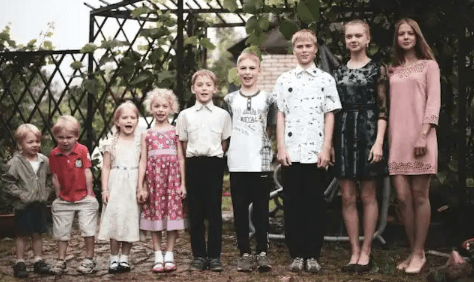5 Types of Sibling Relationships

5 Types of Sibling Relationships are complex and multifaceted, encompassing a range of dynamics that influence individual development and family cohesion. From the nurturing presence of a protective older sibling to the joyful spontaneity of a playful younger sibling, each type contributes uniquely to the family structure. In contrast, rivalry can forge unexpected pathways for growth, while supportive relationships enhance emotional resilience. However, not all sibling bonds are strong; some remain distant, highlighting the potential for reconnection. Understanding these dynamics raises important questions about how they shape our identities and interactions within the family unit.
The Protective Older Sibling
Navigating the complexities of sibling dynamics, the role of the protective older sibling often emerges as a cornerstone of familial relationships.
This nurturing bond shapes childhood memories, fostering a sense of security and belonging. Through their guidance and support, older siblings empower their younger counterparts, instilling resilience and independence.
Ultimately, these relationships cultivate lifelong connections that celebrate individuality while cherishing shared experiences.
The Playful Younger Sibling
Embodying a spirit of joy and curiosity, the playful younger sibling often serves as a catalyst for laughter and creativity within the family unit.
Through playful pranks and imaginative games, they inspire childhood adventures that strengthen sibling bonding.
Their knack for playful teasing and sharing secrets fosters a unique connection, reminding us that freedom in expression and play is essential for nurturing familial relationships.
Read Also Dry Food: Global Pet Food Market by Region
The Rivalry-Fueled Siblings
Sibling rivalry is a common phenomenon that often emerges in the dynamic of growing up together, where competition and comparison can foster both conflict and resilience.
These competitive dynamics may arise from jealousy factors and can significantly affect emotional well-being.
However, through effective conflict resolution and understanding shared experiences, siblings can transform rivalry into a foundation for personal growth, ultimately strengthening their bond.
The Supportive Sibling Pair
While the complexities of sibling relationships can often lead to rivalry, there exists a profound potential for support and encouragement that can significantly enrich both individuals’ lives.
The supportive sibling pair thrives on emotional bonding, drawing strength from shared experiences.
This nurturing dynamic fosters resilience, allowing each sibling to navigate life’s challenges together, cultivating a sense of freedom and empowerment that enhances their individual journeys.
The Distant Sibling Relationship
How do siblings who grow apart navigate the complexities of their relationship?
The distant sibling relationship often involves emotional distance and communication barriers that can hinder connection. Recognizing these challenges is crucial for fostering understanding and compassion.
Conclusion
In the intricate tapestry of 5 Types of Sibling Relationships, each dynamic weaves its own narrative, rich with potential for growth and understanding. The protective older sibling stands as a guardian, while the playful younger sibling injects vitality into everyday life. Rivalries spark transformative conflicts, supportive pairs foster resilience, and distant relationships linger in the shadows, yearning for connection. The journey through these varied bonds reveals not just the challenges faced, but also the profound possibilities for reconnection, empathy, and mutual support.






